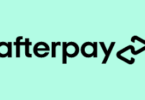YouTubers, online video producers, and general video lovers should pay attention to the fair use disclaimer if they want to avoid the possibility of copyright infringement claims from another party.
These disclaimers can help you stay on the right side of the law and protect your videos from being removed or blocked from YouTube.
Here’s what you need to know about YouTube’s fair use disclaimer, including when it comes into play and how it protects your videos from potential copyright disputes.
You’ve probably seen the controversial fair use disclaimer on many of your favorite YouTube videos, but what does it mean?
Why are more and more of these disclaimers on more and more YouTube videos?
In this article, I explain what the fair use disclaimer on YouTube means and why it has become so prevalent in recent years.
SEE ALSO: YouTube Black Voices Fund for Content Creators
What You Need to Know About the Copyright Disclaimer for YouTube
Like most online video platforms, YouTube will only remove a video in response to a copyright claim.
This means that people who watch your video, upload a copy of it to their channel, or embed it into another piece of content on their site can do so without consequence.
That’s because fair use laws usually protect these derivative works; if they include at least some commentary or criticism with your content, they aren’t legally guilty of copyright infringement.
The key here is that you need to understand how fair use affects your rights to use it successfully.
If you think someone is infringing on your copyright but can’t prove it, then there isn’t much legal recourse available.
Even if there is clear evidence of an infringement, it might not be worth pursuing through legal channels unless you have a particularly compelling case.
Even though legal action doesn’t always work out well for creators (ask any musician), many choose to pursue infringements through DMCA.
It’s up to each creator whether they want to take such actions; however, understanding precisely what fair use allows them (and doesn’t allow them) should help creators decide whether pursuing legal action against an infringer makes sense in their situation.
Fair Use and Copyright Disclaimer on YouTube
If you use copyrighted material in a way that qualifies as fair use, you can do so without seeking permission from (or paying) those who own that content.
Note: If a third party has flagged your video containing copyright-protected material, you may be asked to add an annotation or other message indicating your compliance with fair use laws.
In cases where these messages are not added automatically, adding a few words explaining your compliance with fair use is all it takes.
SEE ALSO: How to cancel LinkedIn premium: Complete guide
Copyright Disclaimer for Music
In many cases, it is lawful for you to use portions of copyrighted music in your video projects.
The fair use doctrine allows you to make some use of copyrighted material without getting permission from copyright holders.
For example, you can incorporate a portion of copyrighted music in your video if it is no more than necessary to serve your purpose and there is no free alternative available.
Copyright owners often permit such uses by including a notice that permits or requires attribution.
If you see such a notice, there’s a chance you can use portions of their work in your videos legally.
However, just because a source includes a notice does not guarantee they permit all forms of reuse.
Read any restrictions carefully before using any portion of their work.
How Does Copyright Law Affect You?
Copyright is a set of legal rights that extends to protect creators of original, fixed works.
Copyright grants creators certain exclusive rights, including reproducing and distributing copies, making derivative works, and publicly performing and displaying the work.
As soon as you upload your video to YouTube, it’s protected by copyright law.
Even when an adequate description of your content in your video’s title or via keywords is provided, it doesn’t matter:
- Copyright gives you ownership of what appears on your channel page and
- Fair use dictates how others can use your copyrighted material.
When claiming fair use, Youtubers usually cite either criticism or education as their rationale for using copyrighted material.
How To Protect Yourself Against Claims of Copyright Infringement
Believe it or not, you can’t just remove or copy a video off YouTube and put it on your website.
That would be a copyright infringement, and you could get into serious trouble.
That said, there are exceptions. For example, the Digital Millennium Copyright Act gives certain Internet users safe harbor protection.
This means that if you include copyrighted material in your work like, a clip from a movie in your vlog.
You might not be liable for copyright infringement as long as you take it down when told to so.
Of course, fair use is another good reason why companies make even use of copyrighted materials.
SEE ALSO: How to Cancel a Metromile Insurance Policy
Conclusion
Copyright law is confusing, even for lawyers. But if you run a channel with original material, there are a few basics that should help you avoid trouble.
First, and most importantly, don’t assume what you do is okay just because everyone else is doing it.
On the Copyright Disclaimer for YouTube, our recommendation is always thread cautiously.
Only use copyrighted material in your video if you have permission or a fair use argument.
The other basic rules for copyright infringement on any website (not just YouTube) are no linking without permission and always giving credit when credit is due.






